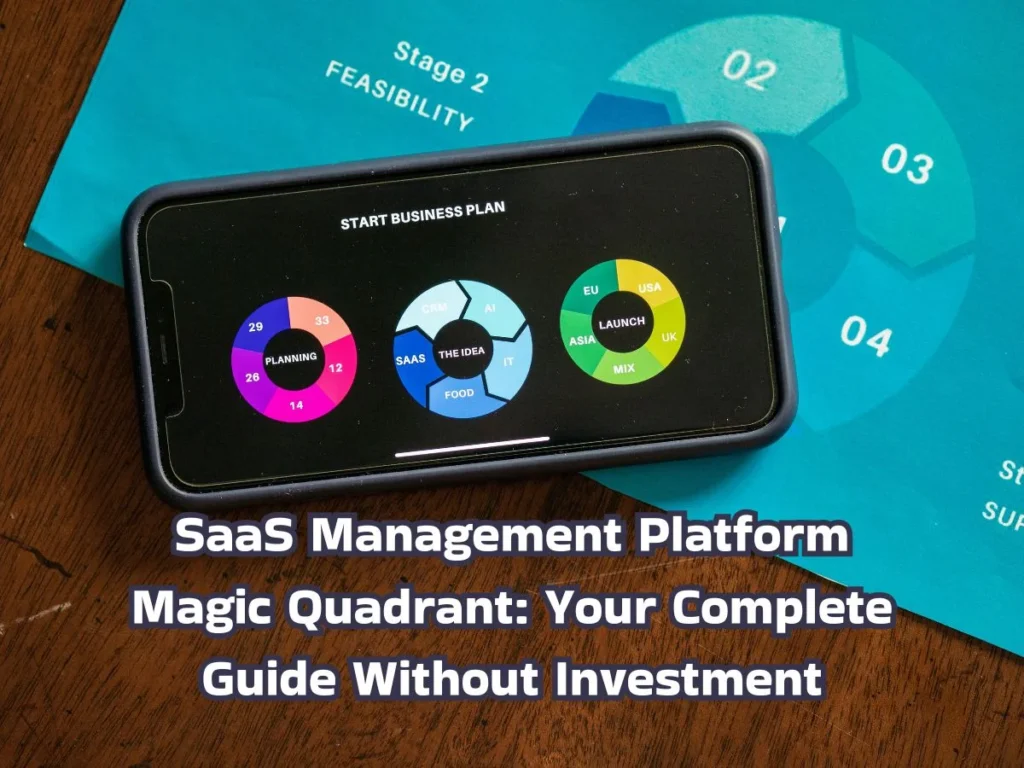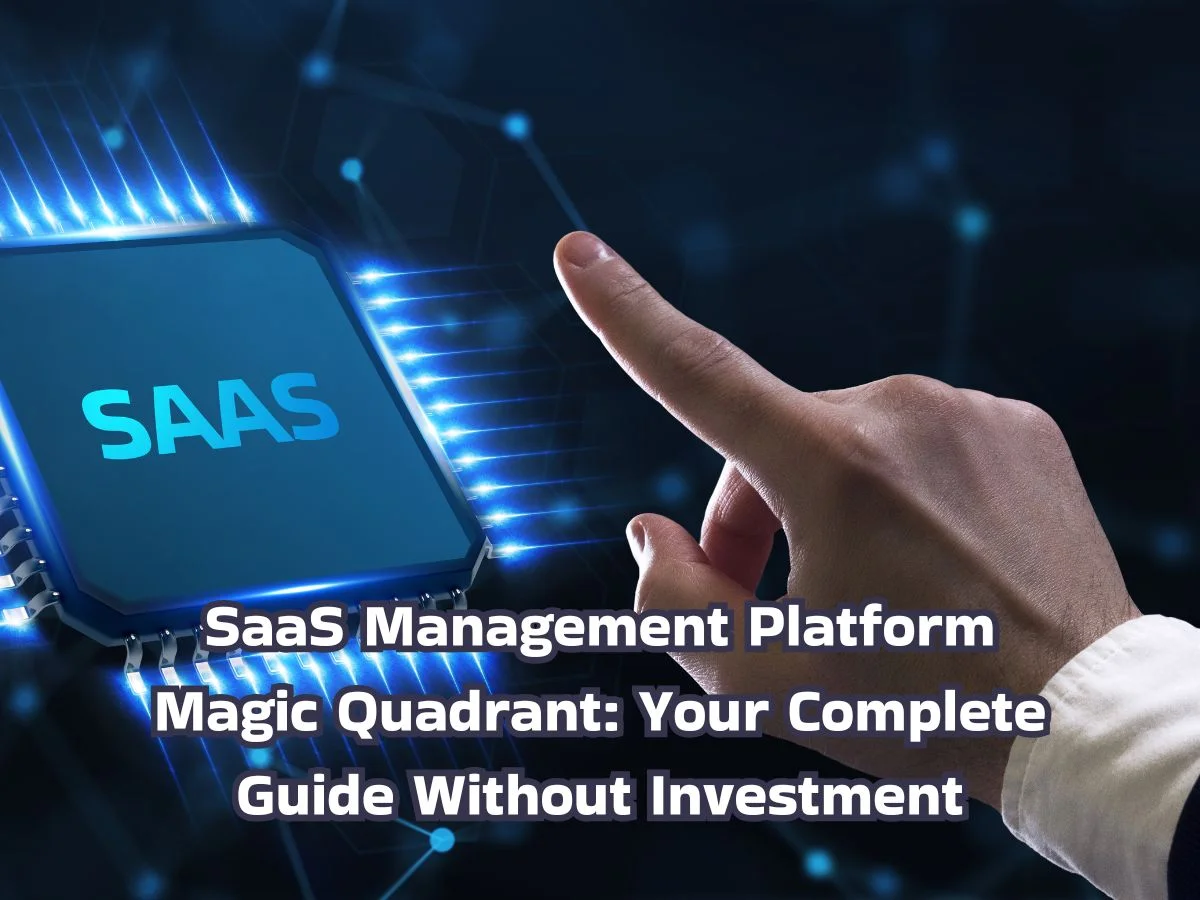Introduction
In today’s fast-paced business world, managing software-as-a-service (SaaS) applications has become essential. Companies use multiple SaaS tools daily, from collaboration apps to finance software. But with so many options, how can you find the right SaaS management platform to fit your needs? This is where the concept of the SaaS management platform Magic Quadrant plays a crucial role.
If you want to simplify your software management without spending money upfront, understanding the SaaS management platform Magic Quadrant can save time, reduce costs, and help your business grow smarter. This guide will walk you through everything you need to know — from the basics to real-world benefits and practical advice.
What is SaaS Management Platform Magic Quadrant?
Let’s start with the basics. A SaaS management platform helps organizations keep track of all their cloud-based software tools. It shows what apps are being used, how much they cost, and helps prevent wasteful spending.
The Magic Quadrant is a way to rank and compare SaaS management platforms based on their strengths and completeness of vision. Think of it as a map that guides businesses toward the best solutions available in the market.
When combined, the SaaS management platform Magic Quadrant helps companies understand which platforms lead the industry and which may be better suited for specific needs.
Top Benefits of SaaS Management Platform Magic Quadrant
Using the SaaS management platform Magic Quadrant comes with many clear benefits:
1. Better Decision Making
By exploring the Magic Quadrant, you can clearly see which SaaS management platforms have strong features, innovation, and user satisfaction. This helps you pick a platform that truly fits your business needs without guesswork.
2. Cost Efficiency
Many companies waste money on unused or duplicate SaaS subscriptions. A good SaaS management platform, identified through the Magic Quadrant, can uncover hidden costs and optimize your software spend.
3. Improved Security
SaaS platforms often hold sensitive data. The best SaaS management platforms help monitor user access and compliance, reducing the risk of security breaches.
4. Simplified Software Control
Managing dozens of apps can get messy. The right SaaS management platform brings everything under one roof, making license renewals, usage tracking, and user management easier.
5. Scalability
Businesses grow, and so do their software needs. The Magic Quadrant highlights platforms that can scale with your business, ensuring you don’t outgrow your software management solution.
6. Insightful Analytics
Top SaaS management platforms offer dashboards and reports that provide deep insights into usage patterns, helping IT and finance teams make smarter choices.

How to Start or Do SaaS Management Platform Magic Quadrant
Now that you know what the SaaS management platform Magic Quadrant is and why it matters, let’s talk about how you can start using this knowledge without any upfront investment.
Step 1: Understand Your SaaS Usage
Before picking any platform, list all the SaaS tools your business uses. Talk to your team, check billing accounts, and gather usage data. This step helps you know what you need to manage.
Step 2: Research the Magic Quadrant
Look for the latest Magic Quadrant reports or summaries available online. Focus on SaaS management platforms that fit your size and industry. You don’t need to buy the report—many summaries highlight the leaders and challengers.
Step 3: Explore Free Trials and Freemium Versions
Many top-ranked SaaS management platforms offer free trials or free-tier plans. Use these to test features and see how the platform works with your software environment.
Step 4: Evaluate Based on Your Needs
While trying free versions, focus on key features like license management, cost tracking, user monitoring, and security controls. Match these with your business priorities.
Step 5: Set Clear Goals
Decide what success looks like. Do you want to cut costs by 20%, reduce security risks, or streamline user onboarding? Clear goals will help you measure the platform’s value.
Step 6: Onboard Your Team
Get your IT and finance teams involved early. Provide training on how to use the SaaS management platform effectively. Collaboration ensures smoother adoption.
Step 7: Monitor and Adjust
Regularly check the platform’s reports and insights. Use these to optimize your software spend and adjust licenses or subscriptions as needed.
Common Mistakes to Avoid
Choosing and using a SaaS management platform without proper planning can lead to costly errors. Here are some common mistakes to watch out for:
Mistake 1: Ignoring the Magic Quadrant Insights
Some businesses rush to pick a tool without considering the Magic Quadrant rankings and user reviews. This can result in picking a platform that lacks essential features or scalability.
Mistake 2: Overlooking Integration Capabilities
A SaaS management platform should easily connect with your existing tools. Ignoring integration options can cause data silos and reduce efficiency.
Mistake 3: Focusing Only on Price
While cost matters, choosing the cheapest platform without checking its usability or support can lead to more problems than savings.
Mistake 4: Skipping User Training
Without proper training, teams might underuse or misuse the platform, missing out on its full potential.
Mistake 5: Neglecting Data Security
Some platforms offer great management tools but weak security features. Always verify that the platform follows industry standards for protecting your data.
Mistake 6: Not Setting Clear Objectives
Without clear goals, it’s hard to measure success. Many companies buy platforms hoping for improvement but never track progress.

Smart Tips and Tricks
To get the most out of the SaaS management platform Magic Quadrant and your chosen platform, here are some lesser-known but powerful tips:
Tip 1: Use API Integrations
Look for platforms offering API access. This lets you automate data flow and customize reports, saving time and reducing manual errors.
Tip 2: Leverage User Behavior Analytics
Some platforms analyze how employees use SaaS tools. Use this info to identify unused licenses or apps that can be retired.
Tip 3: Set Alerts for Subscription Renewals
Prevent surprises by setting notifications for upcoming renewals. This helps you negotiate better deals or cancel unused subscriptions.
Tip 4: Combine SaaS Management with ITSM Tools
Integrating SaaS management with IT service management tools improves ticketing and user support related to software.
Tip 5: Conduct Regular Software Audits
Schedule quarterly audits to review software usage and costs. Continuous monitoring helps keep SaaS expenses in check.
Tip 6: Include Stakeholders Early
Invite finance, procurement, and department heads in the evaluation process. Their input ensures broader adoption and better decision-making.
Real-Life Relevance
Understanding the SaaS management platform Magic Quadrant is not just theory. It has practical uses in everyday business situations.
Imagine a company that had dozens of SaaS subscriptions but little visibility. They didn’t know who used what or how much they spent. After choosing a platform recognized by the Magic Quadrant, they quickly identified unused licenses worth thousands of dollars. They canceled these and reallocated budgets to vital software.
Another example is a growing startup needing better security controls over cloud apps. By selecting a Magic Quadrant leader, they set up strict user permissions and audit trails, reducing risks.
In education, institutions often adopt many SaaS tools for students and staff. Using a trusted SaaS management platform simplifies license management and ensures compliance with budget limits.
The SaaS management platform Magic Quadrant also helps consultants recommend the best solutions to clients, ensuring they make informed, cost-effective decisions.

Conclusion
The SaaS management platform Magic Quadrant is a vital resource for any organization wanting to optimize its cloud software usage. It guides businesses to the right platforms without guessing or wasting money.
By understanding what the Magic Quadrant represents, exploring free options, and avoiding common pitfalls, you can confidently manage your SaaS ecosystem. This leads to cost savings, enhanced security, and greater control.
Start by evaluating your needs, testing top platforms, and involving your team. With clear goals and ongoing monitoring, you will turn SaaS management from a headache into a strategic advantage.
Let the SaaS management platform Magic Quadrant light the way for smarter, safer, and more efficient software management.
FAQs About SaaS Management Platform Magic Quadrant
1. What is the purpose of the SaaS management platform Magic Quadrant?
It helps businesses compare and select the best SaaS management tools based on features, innovation, and user feedback.
2. Can I use SaaS management platforms without investment?
Yes, many platforms offer free trials or free versions that allow you to start managing SaaS without upfront costs.
3. Why is cost control important in SaaS management?
Because companies often pay for unused or duplicate licenses, proper management reduces wasted expenses.
4. How does the Magic Quadrant help in choosing a platform?
It highlights leaders and challengers, helping you identify reliable, well-rounded solutions.
5. What features should I look for in a SaaS management platform?
Key features include license tracking, cost analytics, user monitoring, security controls, and integration options.
6. How often should I review my SaaS usage with a management platform?
Regularly, at least quarterly, to ensure software spending stays optimized and secure.












